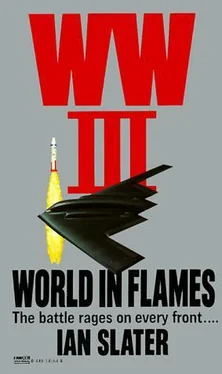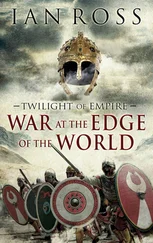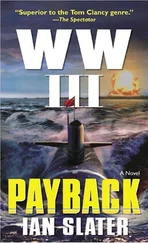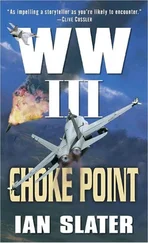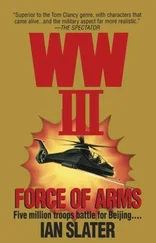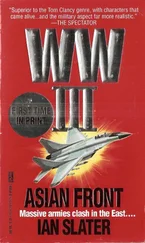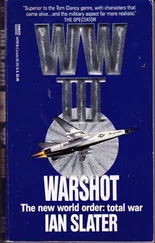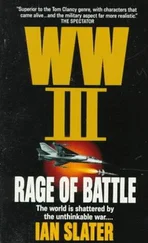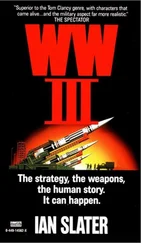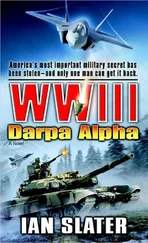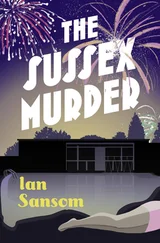“Flashlight!” ordered Brentwood. “Two of you by the door — what’s left of it.”
“Struth!” said Aussie. “The bastards!”
“They’re gone!” said one of the troopers, looking around disbelievingly at the rubble. Brentwood, blinking hard, eyes gritty with dust, spotted a shoe by itself over near the desk. Behind the desk, its dark teak split asunder by the explosion, he saw a man whose face and eyebrows were plaster-white, dead, eyes staring heavenward, a neat bullet hole mid-forehead, only a faint trickle of purplish blood made dark by the dust congealed on the lapel of his suit, where the blood had dripped from his chin. But no more bodies were found in the rubble.
“Who is it?” asked one of the troopers. “Suzlov?”
“Yes,” answered David. “It’s him.”
“We’ve got three minutes,” said the sapper corporal, his voice devoid of panic but insistent. “We’d better move, Lieutenant.”
“Where the fuck to?” asked another, glancing out at all the tanks.
“All right,” said David. “Red-green flares, Aussie. Out the west window over there. And watch the carpet.” The red-green sequence would be the signal for the SAS troops to don the SPETS overlays and withdraw as best they might.
Aussie took his “Popsicle,” so called because the red and green self-propelled signal flares were no bigger than two frozen juice sticks. As he clipped a new magazine into the grip housing of his MAC, the flare pack in his left hand, and moved toward one of the COM’s west windows, one of the troopers covered him, shining the flashlight low, its beam a few inches above the carpet so they could see any indication of an Astrolite patch.
A few more men from C Troop now passed through the hole that only a minute or so before had been a solid brick wall, one of them Cheek-Dawson, with a tourniqueted bloody left arm in a strap sling, his Kevlar helmet split down the left side, and a hemorrhaging leg wound. “Come on, Lieutenant,” he told Brentwood. “Time to go.”
Brentwood was bending down, making absolutely sure, for the record, that Suzlov was dead, feeling for the slightest trace of a carotid pulse. “He’s cold,” he said.
“Let’s go!” echoed another trooper nearby, as the Australian, crossing the carpeted hallway in two steps worthy of a danseur, made his way to the west window and fired the flares.
“Everybody out of the building!” ordered David. “Assumption Cathedral. Now!”
In less than a minute, even the wounded Cheek-Dawson had reached the ground floor, the order to “clear out” shouted and repeated down the stairwells.
As they hit the cold, dark air, the snow now falling more heavily, they glimpsed dark humps of bodies in the light of the SPETS’ flares, some half-buried in the snowdrifts by the trees to their right, as they headed south for the short, desperate run to the cathedral near where several goshawks lay dead, having been caught in the crossfire.
“Where’s Laylor?” asked David as the fourteen men — all that remained of his and Cheek-Dawson’s forty troopers— headed for the Assumption’s golden domes, which, capped with snow, formed a perfect symmetry.
“On his way,” said one of the troopers.
As they ran, David suddenly called out to Cheek-Dawson, “Suzlov was cold.”
“What the devil are you on about?”
“Stone bloody cold!” shouted David, adopting the Englishman’s swear word to drive home the message, his own voice drowning now beneath the rattle of a machine gun opening up from the top floor of the arsenal two hundred yards behind them, red tracer arcing gracefully through the blizzard, kicking up snow about them.
“He wasn’t killed by us,” David explained. “They murdered him!”
Cheek-Dawson stumbled. David grabbed the Englishman’s collar, propelling him forward toward the steps of the holy refuge. Cheek-Dawson was trying to fit it all together, but nothing would fit. With his arm hurting so badly, near to the point of him blacking out, only sheer will kept him going, that and Brentwood, who, he thought, must be as addled as he himself was from the unbelievable noise and shock of the short, fierce battle and now the thundering roar of the COM collapsing. All he could think of was that all the other Russian henchmen — General Marchenko, the KGB’s Chernko, et cetera — must have gotten out via some tunnel from the COM, or possibly through some other secret exit that Western Intelligence hadn’t twigged to.
Still too heavy, unable to rise the two hundred feet to the surface, the USS Roosevelt was crawling at a mere four knots, provided by her twin slit-recessed props in her aft ballast tank, moving toward the area directly beneath the four-hundred-yard-diameter hole that her torpedoes had blown in the ice roof. At five knots, it would take her another nineteen minutes even with the assist of the local current before the broken echoes of her active sonar would tell her she was beneath the ice-free hole.
Within another half hour, however, the heat generated by her torpedo’s explosion would be completely dissipated and the ice hole would be starting to crust and freeze over again. Meanwhile the enemy sub, adjudged “hostile by sound,” was closing, having fired three torpedoes in response to the Roosevelt’s firing of one of its Mark-48 torpedoes to break open the ice. In response, Brentwood had launched the four Mark-48s toward the hostile and they were now running. Meanwhile, the men in “Missile Firing Control” remained as perplexed as the rest of the crew by the captain’s earlier order, still in force, to “man battle stations missile” and to begin the missile firing procedure sequence. They had received no authorization to launch, and no one aboard had received any indication of conditions that would justify Brentwood exercising his IAL — independent authority to launch.
“Our fish closing…” reported Sonarman Emerson, watching the blips of one of the four M-48s from the Roosevelt moving toward one of the blips that had been fired from the hostile.”
* * *
“Wire disengaged,” advised Emerson, informing Control that the Roosevelt’s torpedo was now in automatic homing mode. “Three thousand yards… two thousand to go… fifteen hundred… one thousand… veering… veering… enemy fish closing in…” The three blips on the sonar screen — two enemy, one from Roosevelt —merged, the luminescent dots becoming one, swelling, then gone from the screen. Emerson swung about excitedly to Link. “We got ‘em…we got—”
“Be quiet.” It was Capt. Robert Brentwood, disturbingly calm to those in Control, his words more like an older man’s dismissal of a younger, emotional wife, its implication— “Behave yourself”—startling to Zeldman, who was not only waiting anxiously for the three remaining 48s now about to go off the wire into automatic, but who was also envisaging him and Brentwood on the opposite sides of a court-martial over Brentwood’s order to “man battle stations missile”—the order continuing the preparatory procedures dangerously close to the point of no return.
All Zeldman’s instincts were against interfering, but was he, he wondered, permitting his and Brentwood’s relationships with Rosemary and Georgina Spence to mislead him, holding him back from a higher responsibility to the crew if Brentwood could no longer—
Suddenly Brentwood, while simultaneously monitoring the verification sequences of Missile Control, Sonar, and the helmsman’s report of the sub’s painfully slow progress to the area directly beneath the hole, turned to Zeldman. “You heard the order to disarm?”
“Yes, sir,” replied Zeldman, his anxiety increasing with Brentwood’s apparent clairvoyance. “Problem is, sir, that you didn’t order all missiles disarmed. We still have four with seven MARVs apiece. That’s twenty-eight warheads, each of three hundred kilotons, sir.”
Читать дальше
